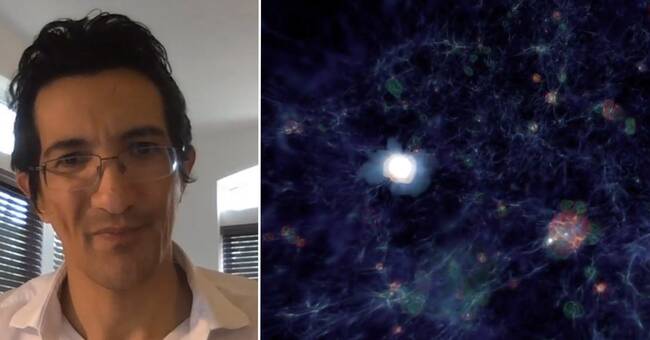Last year, the Nobel Prize in Physics went to the discovery of black holes and that there is also a supermassive black hole in the middle of our own galaxy.
Today it is believed that all large galaxies have a giant black hole in the center.
But what did the very first black holes look like?
Stars form at high speed
The newly discovered supermassive black hole has a mass equivalent to 1.6 billion suns and is surrounded by large amounts of gas that are drawn into the black hole.
This releases energy that makes the surroundings of the entire black hole shine brightly.
It is called a quasar and this one has been named J0313-1806.
The discovery was presented at the American Astronomical Society's meeting this week.
- We can see that the quasar is surrounded by a galaxy that produces stars at a very high speed, says Feige Wang who has led the study.
He is an astrophysicist at the University of Arizona in the United States.
A darker universe
Astronomers thus see a galaxy of stars emerge around the quasar 670 million years after the big bang.
It is a time when the universe was darker than it is today.
Stars and galaxies had just begun to ignite, and heavy and dense structures were unusual.
So how could the supermassive black hole have grown so fast?
Astronomers around the world are now working on theories to explain it.
Play the video to hear Jonathan Tan's theory of how the universe's first black holes were formed.

